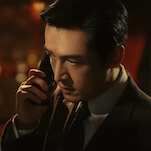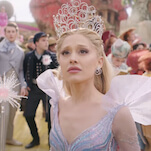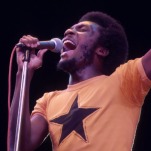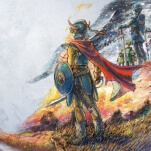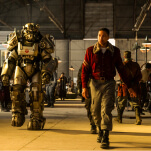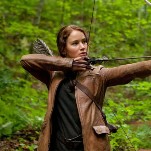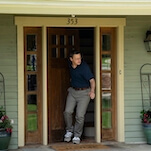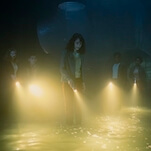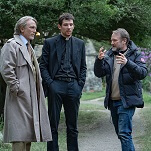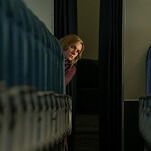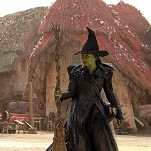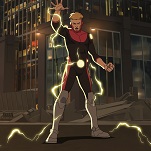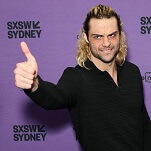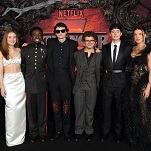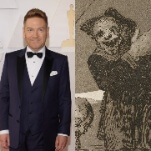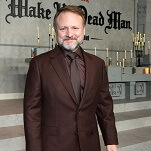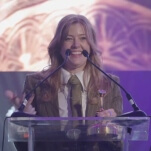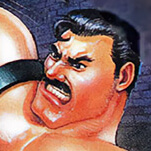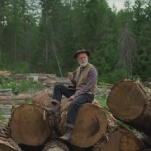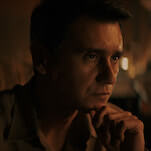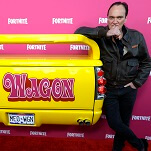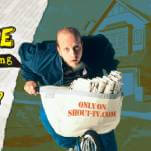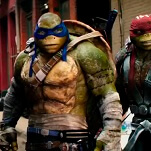How Claire Denis pulled off directing back-to-back movies during the pandemic
Both Sides Of The Blade and Stars At Noon director Claire Denis discusses characters in exile, working with Margaret Qualley, and shooting in Paris and Panama

Claire Denis arrives at her Upper East Side hotel’s sparsely populated restaurant one afternoon during the 60th edition of the New York Film Festival, clutching a drugstore item she had just purchased after searching for a Duane Reade for quite some time under incessant rain. “It’s easy to find Chanel and designer things around here, but not a pharmacy,” she rightfully notes about this part of town, before going on to compare the weather of her hometown Paris to New York’s. She corrects me when I indicate they are perhaps comparable. “No, New York is much more brisk,” she observes. “In France, there is the Gulf Stream, the winter comes slowly, the spring comes slowly. Here, I arrived on Saturday, it was warm, and now suddenly became wintery.”
The ever-productive French filmmaker is similarly reluctant to equate Both Sides Of The Blade and Stars At Noon, the two erotic thriller-adjacent films she made in close proximity to each other and released in 2022. Starring veteran Denis collaborators Juliette Binoche and Vincent Lindon as Sara and Jean, Both Sides Of The Blade charts a mysterious Parisian love triangle, while the sultry Stars At Noon with Margaret Qualley and Joe Alwyn unfolds through a secretive tale where sex is currency and love is ruinous.
“For me, they are very different for chronological and maybe emotional reasons,” explains Denis. “For Both Sides Of The Blade, we were in the beginning of the second [Covid] lockdown. The winter was coming and it could get worse. [But] Stars At Noon was written, and I was in my mind preparing myself to shoot that as soon as I could.” Still, she ended up shooting them in succession, running to Panama—a stand-in for Nicaragua—for the latter as soon as she finished editing the former. “No insurance company would insure [a production in Nicaragua] pre-election,” she recalls about the controversial election that reinstated Sandinista National Liberation Front leader Daniel Ortega as President in 2021. “And [in terms of the pandemic], nobody believed that they had the right vaccine [at the time]. So I said, ‘Let’s stay in Panama!’”
Still, the projects did share something in common. Namely, Denis’ personal touch that took liberties with the source materials for both movies—novels by Christine Angot and Denis Johnson, respectively—transposing them into cinematic canvasses in synch with the overarching themes of her filmography; those defined by sensual cues and characters in exile.
Below, Denis talks through both projects and reflects on overarching preoccupations and ideas at the heart of her cinema.
The A.V. Club: Let’s first talk about how you landed on Both Sides Of The Blade as well as your approach towards adapting Christine Angot’s novel.
Claire Denis: Christine, whom I worked with on Let The Sunshine In, was finishing a [new] novel, and she wasn’t prepared to work on a new script. So she said, “Maybe you can use some page[s] of my last novel.” [And that’s what I did.] In the Christine Angot novel (like in the Denis Johnson novel), the [female protagonist] speaks in first person; says “I.” I wanted to transform that because it was a very autobiographical novel for Christine. I had to completely change things because I knew the two men she was speaking about [in real life]. I thought, “That’s not going to help me. I have to clear my mind.” So I changed both men completely, and their situation. I made Juliette Binoche the heart of the story [instead of] the person who [narrates] the story. So I did that quickly. We had a very short schedule [and little financing]. I did location scouting near where I live and [also the suburbs] where my grandparents [used to] live.
AVC: And you made it happen in the midst of the pandemic against the odds.
CD: It was a very strange exercise. Everyone was expecting the worst winter. Everyone in the crew was frightened. But nobody went sick. We were tested every day. We had no money to bring a camera to the opening sequence in the seaside, so we shot it on an iPhone. It was the end of November and the water was already freezing. [That experience] took me so far from Stars At Noon. I thought maybe that Stars At Noon would never happen. It was not a very optimistic moment. But that in a way protected me from realizing how [emotionally] violent the story of Both Sides Of The Blade was.

